alongside Chirality & Symmetry
page 7
| 1 | 2 | 3 | 4 | 5 | 6 | 7 | 8 |
Experimental Thinkers as of 3-27-2023
The incidence of glaciation as an impact on life, needs to be put into perspective:
The plants and animals of the Pleistocene are, in many respects, similar to those living today, but important differences exist. Moreover, the spatial distribution of various Pleistocene fauna and flora types differed markedly from what it is at present. Changes in climate and environment caused large-scale migrations of both plants and animals, evolutionary adaptations, and in some cases extinction. Study of the biota provides not only data on the past paleo-environments but also insights into the response of plants and animals to well-documented environmental change. Of particular importance is the evolution of the genus Homo during the Pleistocene and the extinction of large mammals at the end of the epoch.
Evolutionary changes during the Pleistocene generally were minor because of the short interval of time involved. They were greatest among the mammals. In fact, the epoch has been subdivided into mammalian ages on the basis of the appearance of certain immigrant or endemic forms.
Mammalian evolution included the development of large forms, many of which became adapted to Arctic conditions. Among these were the woolly mammoth, woolly rhinoceros, musk ox, moose, reindeer, and others that inhabited the cold periglacial areas. Large mammals that inhabited the more temperate zones included the elephant, mastodon, bison, hippopotamus, wild hog, deer, giant beaver, horse, and ground sloth. The evolution of these as well as of much smaller forms was affected in part by three factors:
- A generally cooler, more arid climate subject to periodic fluctuations.
- New migration routes resulting largely from the emergence of intercontinental connections during times of lower sea level.
- A changing geography due to the uplift of plateaus and mountain building.
The most significant biological development was the appearance and evolution of the genus Homo. The oldest species, H. habilis, probably evolved from an australopithecine ancestor in the late Pliocene. The species was present in Africa by 2 million years ago and is known from sites as young as 1.5 million years old. Another extinct species, H. erectus, evolved in Africa, possibly from H. habilis, and is known from sites about 1.6 million years old. H. erectus spread to other parts of the Old World during the early Pleistocene and is known from northern China and Java by roughly 1 million years ago. Representatives of this group are known from many sites, and these beings constituted the dominant human species for more than a million years.
The species H. sapiens, to which all modern humans belong, evolved in the later part of the middle Pleistocene, and early forms of the species are known from about 400,000 years ago. The Neanderthals, a group of closely related hominins that make up the species H. neanderthalensis, appeared approximately 100,000 years ago during the last interglaciation and are known from many sites in Europe and western Asia. Modern humans arrived in Europe some 45,000–43,000 years ago, and both species overlapped on the continent for at least 10,000 years. Neanderthals disappeared about 35,000 to 30,000 years ago; by then populations with fully modern skeletons had evolved and were widespread throughout the Old World. Exactly when modern H. sapiens entered the New World remains controversial.
It appears that fully evolved humans had migrated as far as Alaska from Siberia via the Bering land bridge by 30,000 years ago, and large numbers presumably moved south down the Canadian plains corridor between the Cordilleran and Laurentide ice sheets when it opened near the end of the last glaciation some 12,000 years ago. Conflicting and not fully accepted evidence at a few sites in the United States and in southern South America, however, suggests occupation of the continental interior prior to 30,000 years ago. If such findings are valid, the group of earlier immigrants may have arrived by small ocean-going craft from the Pacific Islands.
Cause of the climatic changes and glaciations
Pleistocene climates and the cause of the climatic cycles that resulted in the development of large-scale continental ice sheets have been a topic of study and debate for more than 100 years. Many theories have been proposed to account for Quaternary glaciations, but most are deficient in view of current scientific knowledge about Pleistocene climates. One early theory, the theory of astronomical cycles, seems to explain much of the climatic record and is considered by most to best account for the fundamental cause or driving force of the climatic cycles.
The astronomical theory is based on the geometry of the Earth's orbit around the Sun, which affects how solar radiation is distributed over the surface of the planet. The latter is determined by three orbital parameters that have cyclic frequencies:
- The eccentricity of the Earth's orbit (i.e., its departure from a circular orbit), with a frequency of about 100,000 years.
- the obliquity, or tilt, of the Earth's axis away from a vertical drawn to the plane of the planet's orbit, with a frequency of 41,000 years.
- The precession, or wobble, of the Earth's axis, with frequencies of 19,000 and 23,000 years.
Collectively these parameters determine the amount of radiation received at any latitude during any season; radiation curves have been calculated from them for different latitudes for the past 600,000 years. These curves vary systematically from the poles to the equator, with those in the higher latitudes being dominated by the 41,000-year tilt cycle and those in lower latitudes by the 19,000- and 23,000-year precession cycles. The astronomical theory places emphasis on summer insolation in the high-latitude areas of the Northern Hemisphere (about 55° N latitude). Glaciations are hypothesized to begin during times of low summer insolation when conditions should be most optimal for winter snow to last through the summer season. ("Pleistocene Epoch." Encyclopædia Britannica, 2013.)
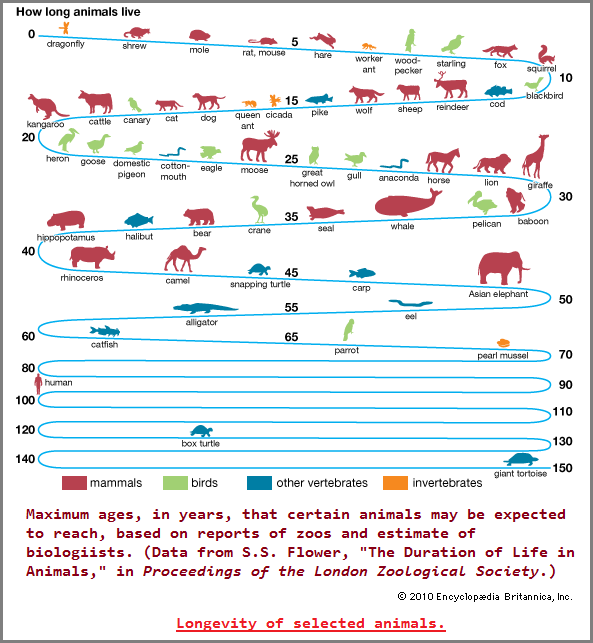
The replacement rate of cells in different life forms may be related to the evolutionary development of cellular activity in general. However, if a cell is born to strive for life, it appears to be a contradiction that a measles virus would cause degeneration of the host unless it is acting on pure instinct for its own survival and is not aware of the person as a life source. Such a virus acts like a farmer who clears a forest of trees without realizing the impact the loss of trees can have. It is also a strange finding that the higher functions can have a steeper loss of cells:
...There is a striking decrease in the number of living cells in the cerebral cortex of the brain of humans with age. The cerebellar cortex of the rat and human is about as susceptible to age deterioration as is the cerebral cortex. Other parts of the brain are not so obviously marked by aging.
There is, in short, a tendency for the higher and more recently evolved levels of the nervous system to undergo more severe aging loss than do other regions, such as the brainstem and spinal cord. It is not yet known how much of the loss of brain cells results from conditions within the brain itself and how much results from extrinsic causes, such as deterioration of the blood circulation. The nutrition and maintenance of nerve cells, or neurons, in the central nervous system depends to a considerable extent on neuroglia, small cells that surround the neurons. The absolute number of these cells apparently does not decrease with age, but some of the microscopic changes seen in the neurons of old persons are similar to the changes produced by starvation or physical exhaustion.
It has been shown that after an attack of measles, the virus remains in the host's body for the remainder of life and infrequently gives rise to a rapidly progressing degeneration of the cerebral cortex. This virus or other inapparent viruses may also be responsible for the individual differences in onset of senility in humans.
The renewal tissues are typically made up of a population of proliferative cells, which retain the capability for division, and a population of mature cells, produced by the proliferative cells and with limited life spans. The production of cells must balance the steady loss and also compensate quickly for unusual losses caused by injury or disease, so each renewal tissue has one or more channels of feedback control to adjust production to demand. Aging of renewal tissues is expressed in several ways, including decrease in the number of proliferative cells, decrease in the rate of cell division, and decrease in responsiveness to feedback signals. Changes of these factors in the blood-forming tissues of the mouse are small, yet the blood-forming tissues do suffer an aging deficit, for the ability to respond to extreme or repeated demand is significantly reduced in older mice. ("aging." Encyclopædia Britannica, 2013.)
However, it may not be a viable course of thought to take information about animal behavior in relationship to the Sun and Moon and Earth of today, and expect it to provide an environmental portrait of what the early building blocks of life were subjected to billions of years ago. Animals and plants today have elongated time periods... as might the bacteria and viruses of today as opposed to any that were developed when the rotation rate of the Earth was faster. The "perceptions" of early building blocks would have been subjected to condensed measurements of time, quite possibly accounting for the accelerated (short) life spans of some species.
Here is an image of the three "phases" ("moments") of the Sun alongside an image of Earth:
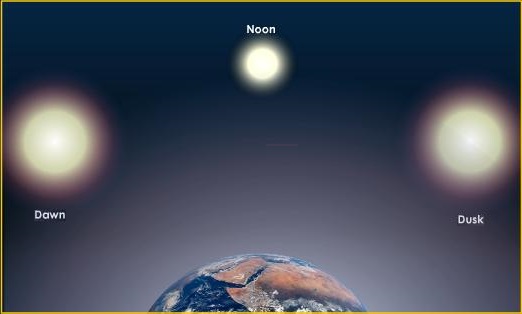
The three phases would have been "felt" by early photo-reactive biological substrates as differentiated impressions intensified by the succession of the day and night dichotomy. The rate of the Earth's rotation, crystallization effects of glaciation, the widdershins (counter-clockwise) rotation of the Earth, Sun and Moon, atmospheric and water photo-dynamics, etc., are "monomerics" (monomers/singular events). Mix them together and you get a polymerization influence. The fast rate of the Earth's rotation, coupled to a (presumed) minimized ozone protective layer, would have intensified the irradiation effects of any "faint young sun" idea, much like flashing lights and pulsating sirens of emergency vehicles or the vibration effects of a forthcoming earthquake as detected by life forms sensitive, receptive and reactive to them.
- "Faint Young Sun" by Jonathan O'Callaghan, January 27, 2022.
- Faint young Sun paradox remains by Colin Goldblatt & Kevin J. Zahnle).
Let me ask the rather obvious question: Did a faster rotation rate "accentuate" the effects of a proposed faint young Sun? In other words, is it easier to see a flickering dim light or one that is stationary? Is the human physiology more tuned into the reception of a flickering light or a stationary one?
As far as we know, life as we know it came by way of Photo-synthesis pathway. In other words, light was the source of energy which got the ball rolling. However, it was a source which effected a recurring three-patterned strobe-light impression. And just like apples requiring a period of cold in order to effectively grow, let us consider that all life gained a footing by the dichotomy of cold and warmth. The following illustration is a simplified reference as to how the Sun at different times of the day in three relative positions to the dawn, noon, dusk sequence, can affect a complex biological life form on a daily basis with a relatively (elongated) short range of change in terms of the lizard's life span and the lengthening photo-period due to a slowed rotation rate of the Earth. If the Macromolecules of early life are to be thought of as being similarly affected, albeit with a shorter duration due to an increased rotation rate which subjected the building blocks of life to multiple events of the photo and darkness periods, a rapid rate in life spans and replacements may have created a "memory" of the three-patterned strobe light event which is being called a triplet code. While there can be alternatives to the RNA and DNA code due to an inherent ability to be more diffuse, the fact that a triplet code is infused makes it more likely that this pattern will continue and change in accord with the changes in the photo-period brought on by an expansion of the Sun and slowing rate of the Earth's rotation.
Not only How life first arose, but When and Where it arose are three questions needing to be answered. Saying that it occurred in the deep past on Earth is not necessarily inaccurate, but it does not help us pin point under which exact conditions fife emerged. Thinking that life occurred simultaneously in multiple places on Earth may not be incorrect, but it also may not be true. Life could have occurred simply by chance, by accident in one area in a narrow window of opportunity. For example, did it occur in a warm or hot pool of salty or saltless water? What kinds of minerals were present, if any at all? Did it occur on the surface or at a great depth? A present tactic is to look at the simplest forms of life which still exist today, because we think these were present when life supposedly sprouted billions of years ago, though we don't actually know if they represent the ancestral forms of biological activity from which life began its gauntlet race. There may in fact be multiple "missing links" in early biological development just as we think there are in hominid development.
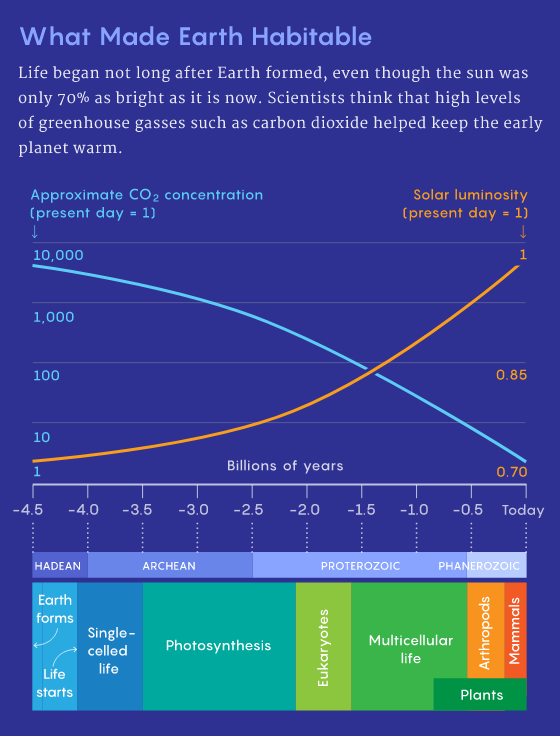
With respect to all of life, it is a rather curious feature to see that humans have characterized it with a three-domain system known as the Archea, Bacteria, Eukaryota, though other systems with a different enumeration have been proposed:
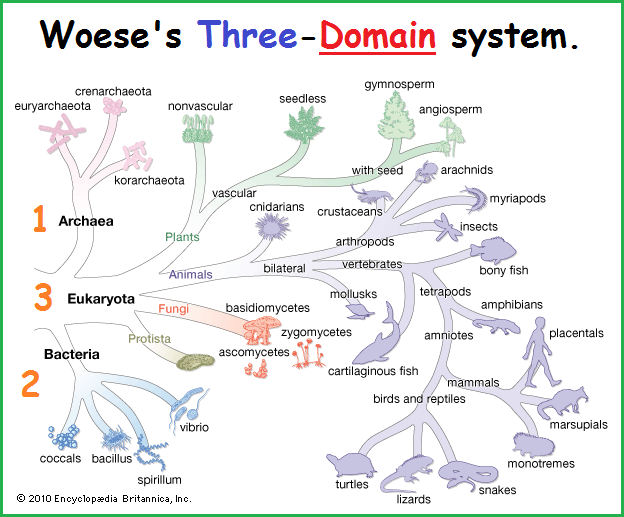
(If we emphasize a "C" sound for the Eukayota (euCaryota), we have an ABC system.)
We of today are inclined to think that the Cyanobacteria represents one of the earliest forms of life:
Introduction to the Cyanobacteria
Architects of earth's atmosphere
Cyanobacteria are aquatic and photosynthetic, that is, they live in the water, and can manufacture their own food. Because they are bacteria, they are quite small and usually unicellular, though they often grow in colonies large enough to see. They have the distinction of being the oldest known fossils, more than 3.5 billion years old, in fact! It may surprise you then to know that the Cyanobacteria are still around; they are one of the largest and most important groups of bacteria on earth.
Many Proterozoic oil deposits are attributed to the activity of Cyanobacteria. They are also important providers of nitrogen fertilizer in the cultivation of rice and beans. The Cyanobacteria have also been tremendously important in shaping the course of evolution and ecological change throughout earth's history. The oxygen atmosphere that we depend on was generated by numerous Cyanobacteria during the Archaean and Proterozoic Eras. Before that time, the atmosphere had a very different chemistry, unsuitable for life as we know it today.
The other great contribution of the Cyanobacteria is the origin of plants. The chloroplast with which plants make food for themselves is actually a cyanobacterium living within the plant's cells. Sometime in the late Proterozoic, or in the early Cambrian, Cyanobacteria began to take up residence within certain eukaryote cells, making food for the eukaryote host in return for a home. This event is known as endosymbiosis, and is also the origin of the eukaryotic mitochondrion.
Because they are photosynthetic and aquatic, Cyanobacteria are often called "blue-green algae". This name is convenient for talking about organisms in the water that make their own food, but does not reflect any relationship between the Cyanobacteria and other organisms called algae. Cyanobacteria are relatives of the bacteria, not Eukaryotes, and it is only the chloroplast in eukaryotic algae to which the Cyanobacteria are related. (Introduction to the Cyanobacteria)
Cyanobacteria are responsive to the sunlight and therefore exhibit a circadian clock. Curiously, it involves three proteins:
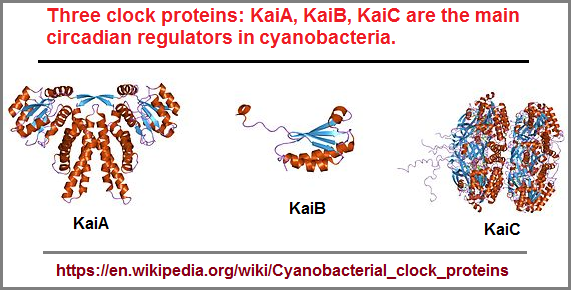
Let's look a little closer at the Cyanobacteria through the eyes of another commentator:
The First Life Forms
The earliest simple life-forms in the fossil record are Prokaryotes (cellular organisms without a membrane-enclosed nucleus)—namely, the bacteria and Cyanobacteria (formerly called blue-green algae). They have been found in rocks called Stromatolites, structures that are layered, globular, generally calcareous, and often larger than a football. Stromatolites formed when colonies of Prokaryotes became trapped in sediments; they are easily identifiable fossils, obvious to a researcher in the field. Thin-sectioning of fossil Stromatolites occasionally reveals the microscopic, fossilized cells of the organisms that made them.
Until about 2.5 to 2.8 billion years ago, the Earth's atmosphere was largely composed of carbon dioxide. As primitive bacteria and Cyanobacteria had, through photosynthesis or related life processes, captured atmospheric carbon, depositing it on the seafloor, carbon was removed from the atmosphere. Through geologic processes possibly related to plate tectonics, this carbon was carried into the Earth's crust. At present approximately 0.1 percent of the carbon fixed annually is lost to the biosphere in this way. During the Proterozoic (2.5 billion to 542 million years ago), this process allowed some free oxygen to exist in the atmosphere for the first time.
Cyanobacteria were also the first organisms to utilize water as a source of electrons and hydrogen in the photosynthetic process. Free oxygen was released as a result of this reaction and began to accumulate in the atmosphere, allowing oxygen-dependent life-forms to evolve. ("community ecology." Encyclopædia Britannica, 2013.)
From Cyanobacteria we enter into the world of plants:
All plants are classified as:
- C3 (plants that use only the Calvin-Benson cycle)
- C4 (plants that use an additional CO2-fixation mechanism and the Calvin-Benson cycle)
- C3-C4 (plants intermediate between C3 and C4)... These plants are thought to be in the pathway of evolution to full C4 photosynthetic status.
- CAM (plants that have a variant of the C4 pathway)
The majority of plants fix CO2 directly into RuBP, and their first stable product is the three-carbon acid PGA, hence the designation C3. These plants have an active photo-respiratory cycle, especially in high light intensity and warm temperatures. ("plant." Encyclopædia Britannica, 2013.)
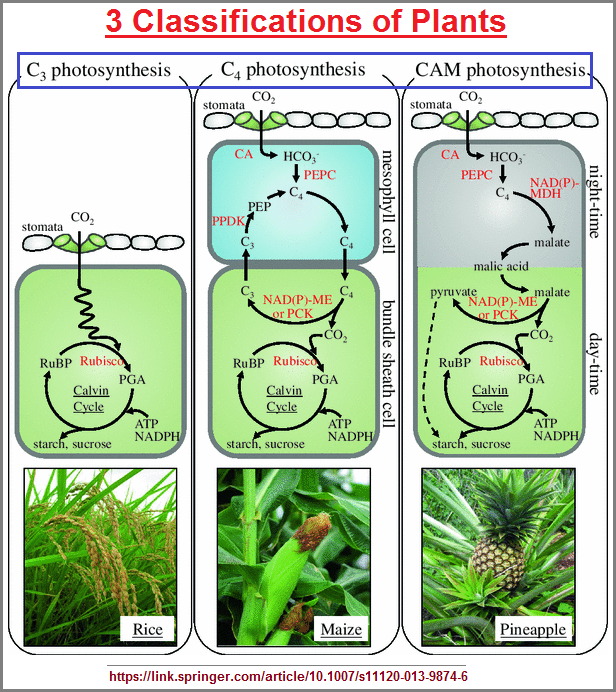
Though we of today can recognize three types of plants based on their type of Photosynthesis, you have got to adjust your thinking in terms of being able to visualize the effects of a fast occurring day and night sequencing that early biological substrates were subjected to. Hence, the great-great-great Granddaddy of Cyanobacteria had a different childhood environment than do life forms of today. The road or school of hard knocks, as they say, was considerably different in the "Olden days" billions of years ago.
The following two images are my rather crude attempts to display an accelerated solar irradiation event of the 3 phases as seen from Earth due to an increase rotation rate. I did not put a blue sky since I have read that the early sky would have been orange, but I did use both a yellow and white Sun image. I shortened the nighttime interval to 1 image frame so as to keep the overall image duration short. Nonetheless, the images give a representation of the idea being presented for those readers who might have difficulty visualization what a dynamically -affecting counter-clockwise (widdershins) rotating earth producing a 3-patterned strobe light effect was like. If the length of a day was... say, 6 hours long, the daytime event would have been 3 hours. This means there would have been a 1-hour interval between the dawn- noon- dusk events. Let us add to this the phases of the moon which would have been different due to the close proximity. The calculation would read: 1 day = 6 hours. If not only the rotation rate of Earth but the rotation rate of the solar system was accelerated as well, then what we know as monthly and yearly rates would also have been different. Thus, working on this assumption:
- 6 hours = 1 day
- 180 hours = 1 month (6 X 30)
- 2,190 hours = 1 year (6 X 365)
In current interval measurements:
- 6 hours = 1/4th of a day (24 ÷ 6)
- 180 hours = 7.5 days (180 ÷ 24)
- 2,190 hours = 91.25 days (2,190 ÷ 24)
All biologists and other researchers are like mechanics who come upon a working vehicle (called life) manufactured by some unknown person or persons and want to know how it was constructed. As such, they make individual or collective attempts to reverse engineer the vehicle and its perceived different systems (fuel, electrical, air, etc.) requirements and servo-actuators. While some contemplate why the manufacturer chosen a given system over another and whether or not a better system could be used or was the one chosen due to manufacturing costs and available resources; the fact remains the construction was carried out and represents patterns developed under different working shifts. Some night time crews think they are more productive then daytime crews, but the standards under which they conform are typically created (but not necessarily refined) during the day. Administratively speaking, the bulk of the bureaucracy and decision making takes place during daylight hours, though in some cases nigh time administrative duties become paramount due to changes in production schedules and alterations in power consumption versus power availability. Life can be viewed like a big flea market with multiple items bought, sold, traded and even created... under certain circumstances. And let us not forget that weather conditions affect flea market operations.
Another analogy to be used for RNA and DNA can be described by viewing them as two baseball teams. While both use the same 1st, 2nd, and 3rd base designations, home plate is referenced by who is up to bat or the catcher. In the case of RNA it is a fellow named Uracil. And DNA's fellow is Thymine. Similarly, it should be noted that home-plate typically is not reference with the enumeration of being "4th" base. Hence, we have three which are and 1 that is not, thereby expressing a 3 -to- 1 ratio. In other words, three amino acids are the same when comparing RNA and DNA and 1 is different. While we typically may not pay any extensive attention to Thymine or Uracil, this is only because we do not reference them as a Babe Ruth or Roger Maris (unless some sport other than baseball is chosen for a selection of outstanding athletes.)
One of the issues with looking at the Triplet code is those who attempt to alter it, thereby suggesting to them that the code may have been created by accident. However, I think it is not that they code is not changeable given the right conditions and medium, but that it has persisted for as long as it has. If it is as weak or open to change as some researchers might think, then surely a change would have taken place after all the geological and meteorological events which have take place over billions of years. Then too, we must wonder why the triplet code was followed up by a triplet code in terms of complex life forms being derived from three germ layers (Endoderm - Mesoderm- Ectoderm) and why there is an enormous quantity of three-patterned structures to be found in human anatomy.
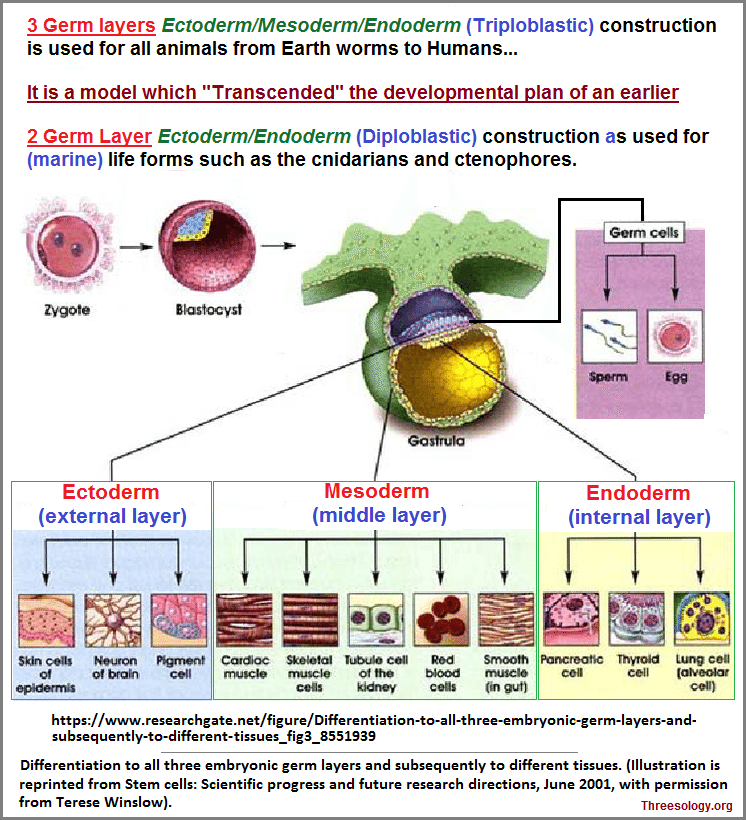

The information on the chart to the right is culled from Dr. McNulty's "Threes in Human Anatomy". For those wanting the chart, I provide this link to the Anatomy_chart.pdf
It's not that life isn't capable of having changes, it is just that it is subjected to a Conserved processing system like a cookie cutter operation in a cookie factory where "anomalies" occur in the production process and might well create a desirable product that the manufacturers want to incorporate as a viable alternative, but that the standard overall operation has a three-patterned S.O.P. (Standard Operating Procedure). Yes, the available genetic materials might well be able to produce a different (life) product if the underlying operation used different templates, (Baking) temperatures different combinations of basic ingredients, etc., but Earthly environment is run by those attending to the use of an "old school" perspective. The old school uses a system to the recurring application of the three ending punctuations called period- question mark- exclamation point. You as an individual researcher may not want to use them or create your own, but they are standardized throughout the world. This is the same for the recurring use of a triplet code. It is not that other forms of life may be created by altering the code and amino acid ingredients, it's just that the underlying heat-lamp pattern is set-in-stone so-to-speak, and that as it changes (wears out/deteriorates) as the Sun decays, the Earth's rotation decays and the effects of the Moon decay, so too will all biological activity which uses the patterns of Nature as if it were a sacred text. Like Religions of today professing an Armageddon, and its millions of believers who accept this idea as a given; they will gladly go along with whatever destruction may come because it will thus confirm their belief. It's not that they can't change, can't think differently, it's just that they have a routine... like a conveyor belt system of activity and thought, and so too does life.
In addressing the topic of an origin for the Triplet code of RNA and DNA, there are many variables which need to be addressed, though I admit this single essay will not be sufficient for some who prefer their own pet theories about life's genesis, including those who are inclined to amalgamate all ideas under the rubric of "god". In describing a particular source or sources for the triplet code there is the issue of describing that which is not only capable of creating an internalized use of the code, but is manifest enough to impress itself unilaterally on several occasions of developmental biology at the same time. It clearly also needs to be a source of light since without light there would be no genesis of life by way of photosynthesis. No less, the intensity of the impression to create such an internalized code has to be one that is sustained for long enough periods that it produces a cyclical habituation sometimes referred to as a biological clock. While most labels used to describe biological rhythms speak of short-period occurrences such as during a day, week, month or even year in terms of seasonal variations, the Triple code is an example of a biological rhythm that has been sustained for billions of years.
Date of Origination: Monday, 6th March 2023... 4:54 AMInitial Posting: Monday, 27th March 2023... 11:14 AM